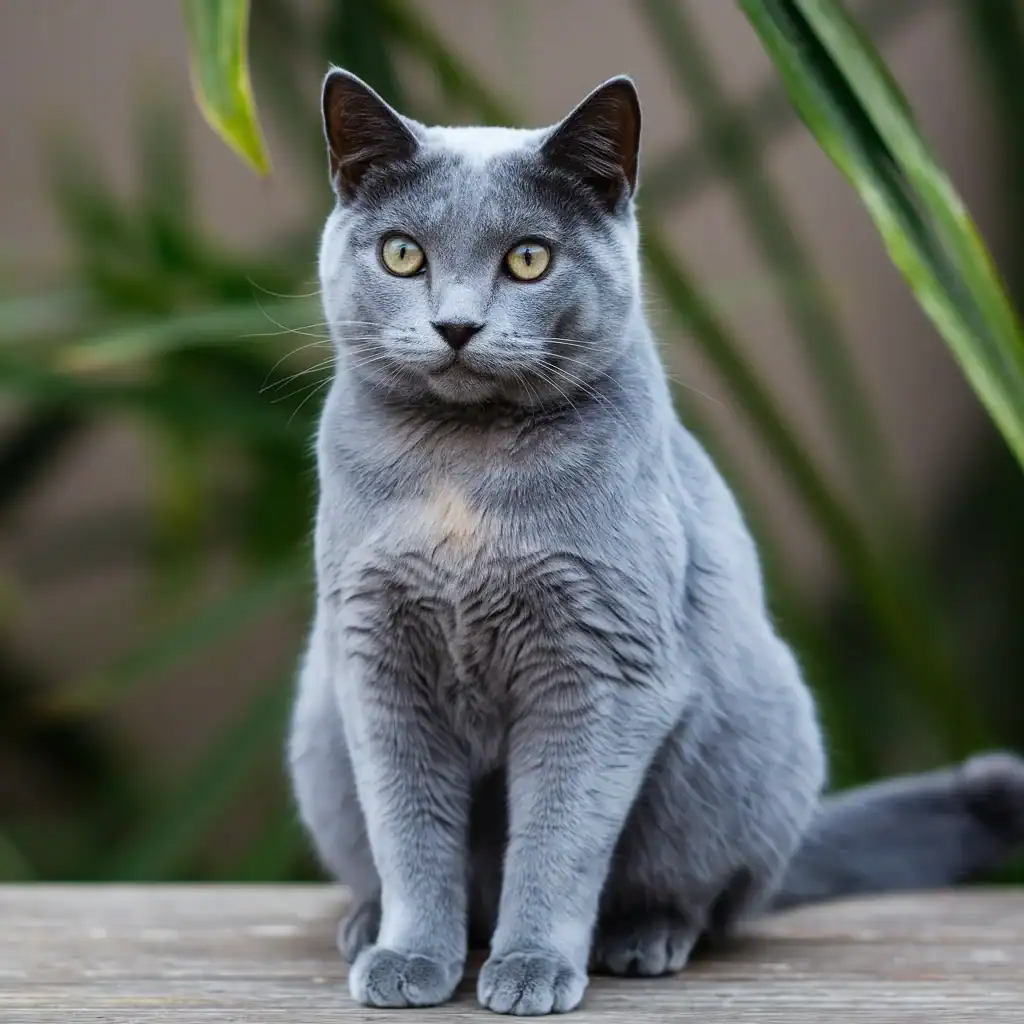Russian Blue cats are widely admired for their stunning gray-blue coats, captivating green eyes, and affectionate personalities. A common question among potential pet owners is: Are Russian Blue Cats Hypoallergenic? This is a critical concern, especially for individuals with allergies who want to share their homes with feline friends. In this article, we’ll explore whether Russian Blue cats can be considered hypoallergenic, what makes them special, and how they might impact allergy sufferers.
Understanding Hypoallergenic Cats and Why It’s Important for Allergy Sufferers
When discussing hypoallergenic cats, it’s essential to define what this term means. A hypoallergenic cat is not entirely allergen-free but produces fewer allergens compared to other breeds. Cat allergies are primarily caused by Fel d 1, a protein found in cat saliva, skin oils, and dander. When cats groom themselves, this protein spreads to their fur, which can trigger reactions in sensitive individuals.
Russian Blue cats are often believed to be hypoallergenic because they produce less Fel d 1 protein. However, the extent of their hypoallergenic qualities can vary among individuals. Understanding this distinction is crucial for anyone considering adopting a Russian Blue cat, particularly if they or a family member has allergies.
Are Russian Blue Cats Truly Hypoallergenic or Just Less Allergenic?
The idea that Russian Blue cats are hypoallergenic stems from their lower production of Fel d 1 protein. While this makes them a better choice for allergy sufferers, it does not mean they are entirely free of allergens. People with mild allergies may find that they can live comfortably with a Russian Blue, while those with severe sensitivities may still experience symptoms.
Additionally, Russian Blue cats have a dense double coat that helps trap allergens. This unique feature minimizes the spread of dander and saliva in the air, reducing exposure for allergy-prone individuals. However, regular grooming and cleaning are still essential to manage allergens effectively.
Why Are Russian Blue Cats Perceived as Hypoallergenic?
One reason for the Russian Blue’s hypoallergenic reputation is their grooming habits. These cats are meticulous groomers, which can help reduce the amount of loose fur and dander in your home. Furthermore, their short, plush coat doesn’t shed as heavily as the fur of some other breeds, leading to fewer allergens circulating in the environment.
How Does the Fel d 1 Protein Impact Allergy Sufferers?

The Fel d 1 protein is the main culprit behind most cat allergies. While Russian Blue cats produce less of this protein, it’s essential to note that no breed is entirely hypoallergenic. Allergy reactions can include sneezing, itchy eyes, congestion, and even asthma in severe cases.
Reducing Fel d 1 Exposure with a Russian Blue Cat
To minimize your exposure to Fel d 1 protein, consider strategies such as:
- Frequent brushing of your cat’s coat to remove loose fur and dander.
- Bathing your cat occasionally to reduce allergens on their fur.
- Using an air purifier to filter allergens from the air.
- Washing your hands after handling your cat or their belongings.
By following these steps, you can significantly reduce the impact of allergens, making it easier to coexist with a Russian Blue cat.
Personal Experiences of Allergy Sufferers Living with Russian Blue Cats
Many allergy sufferers who own Russian Blue cats report fewer reactions compared to other breeds. For instance, Sarah, an allergy sufferer from New York, shared:
“I’ve always loved cats but struggled with allergies. Since adopting my Russian Blue, I’ve noticed a huge difference. Regular grooming and cleaning help keep my symptoms under control.”
Conversely, some individuals may still experience reactions despite the breed’s hypoallergenic reputation. This highlights the importance of spending time with a Russian Blue before committing to adoption. Visiting a breeder or shelter to test your reaction is an excellent way to determine if this breed is suitable for you.
Tips for Managing Allergies While Owning a Russian Blue Cat
If you’re determined to own a Russian Blue despite mild allergies, there are practical steps you can take:
- Designate pet-free zones in your home, such as your bedroom.
- Vacuum regularly with a HEPA-filter vacuum to remove allergens from carpets and furniture.
- Keep your cat’s bedding clean by washing it frequently.
- Use allergen-reducing sprays on your cat’s coat and in your home.
Combining these measures with the Russian Blue’s naturally lower allergen levels can create a comfortable environment for both you and your pet.
How Does a Russian Blue’s Coat Play a Role in Allergen Control?
The Russian Blue’s coat is one of its most distinctive features. This breed has a thick double-layer coat, consisting of a soft undercoat and a denser outer layer. This plush fur doesn’t shed excessively, which helps limit the spread of allergens in the home. However, their coat requires regular brushing to prevent matting and to control allergens effectively.
Additionally, the silver-blue hue of their fur makes Russian Blue cats stand out among other breeds, adding to their allure for potential pet owners.
Are There Other Hypoallergenic Cat Breeds to Consider?
While Russian Blue cats are a popular choice for allergy sufferers, other breeds are also known for their hypoallergenic qualities. These include:
- Siberian cats, which produce lower levels of Fel d 1 protein.
- Balinese cats, sometimes called the “long-haired Siamese,” with a reputation for being hypoallergenic.
- Bengal cats, which have a short, fine coat that limits shedding.
Each of these breeds has unique characteristics, so it’s essential to research and choose one that aligns with your lifestyle and allergy needs.
Can You Test If a Russian Blue Cat Is Right for You?
Before bringing a Russian Blue cat home, it’s wise to spend time around the breed to gauge your allergic reaction. Many breeders and shelters allow potential adopters to interact with cats beforehand. This trial period can help you determine whether you can tolerate the breed’s allergen levels.
Additionally, consider consulting an allergist for personalized advice on managing cat allergies. They can recommend treatments or preventive measures to make living with a cat more comfortable.
Conclusion: Are Russian Blue Cats Hypoallergenic?
While Russian Blue cats are not entirely hypoallergenic, their lower production of Fel d 1 protein and unique coat characteristics make them a better choice for many allergy sufferers. By taking proactive steps to manage allergens, it’s possible to enjoy the companionship of a Russian Blue without significant discomfort. If you’re considering adopting one, spend time with the breed beforehand to ensure they’re a good fit for your household. Russian Blue cats combine beauty, intelligence, and a hypoallergenic edge, making them an excellent choice for cat lovers with mild allergies.

